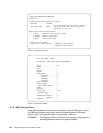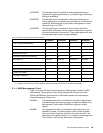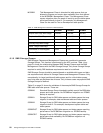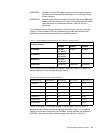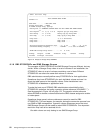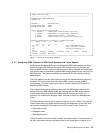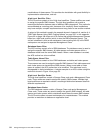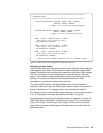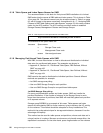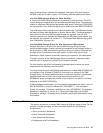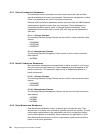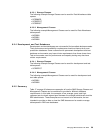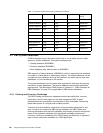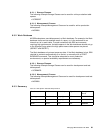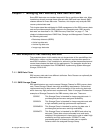
56 Storage Management with DB2 for OS/390
6.1.8 Table Space and Index Space Names for SMS
The recommendation in this book for finely tuned SMS installations is to imbed
SMS codes into the names of DB2 table and index spaces. This is shown in Table
16 on page 56. The data set names have the structure shown in Table 3 on page
23, with a change in the space name itself. As explained in 6.1.7, “Assigning SMS
Classes to DB2 Table Spaces and Index Spaces” on page 53, this name contains
codes for the ACS routines. The ACS routines use these codes to establish
Storage Classes, Management Classes and Storage Groups.
Table 16. Table Space and Index Space Names with SMS Codes
The elements of the space name are:
uvssssss Space name:
u Storage Class code
v Management Class code
ssssss User assigned name
6.1.9 Managing Partitioned Table Spaces with SMS
With DB2, the user has choices on how to allocate and distribute the individual
data sets of a partitioned table space. Two examples are shown in:
• Appendix A, Section A.2, “Partitioned Table Space, DB2 Defined, Without
SMS” on page 162
• Appendix A, Section A.3, “Partitioned Table Space, User Defined, Without
SMS” on page 164
SMS can also be used to distribute the individual partitions. Several different
methods are possible; for example:
• Let SMS manage everything.
• Use one SMS Storage Group for each partition.
• Use one SMS Storage Group for one partitioned table space.
Let SMS Manage Everything
For many partitioned table spaces and index spaces, SMS can handle the
partition distribution. If the number of volumes in the Storage Group is much
larger than the number of partitions, then SMS will most likely place each partition
on a separate volume.
Storage group SGDB20 is an example of this case. Table spaces and index
spaces are allocated by SMS on these volumes, trying to balance the I/O activity
on the volumes. This method should be adequate for many installations.This
method is the preferred technique for storage administrators, because it has the
advantage of simplicity.
This method can be used for table spaces and partitions, where each data set is
a large fraction of a volume. Because a volume can only handle one partition, the
separation is automatic. On the other hand, space fragmentation on the volumes
hlq.DSNDBx.dbname.uvssssss.ynnnn.Ammm



